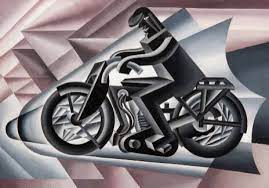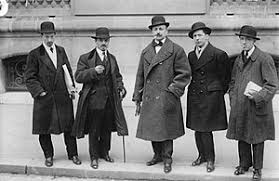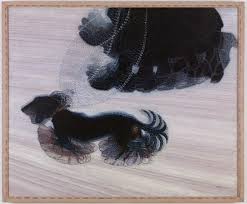Lo experimental en el arte
Por Eduardo Planchart Licea
Dentro de la concepción de arte experimental que delimitaré no entenderemos únicamente aquellas manifestaciones que adhieran a sus obras materiales o técnicas industriales, pues consideramos a este un criterio excesivamente limitante que dejaría afuera tendencias netamente vanguardistas como el cubismos, futurismo, el expresionismos y el surrealismo,etc..
Por ello, asumimos dentro de la experimentalidad tendencias o artistas que develan un nuevo sentido, y una búsqueda constante que abra nuevos caminos al arte y se enfrentan a concepciones diferentes del objeto plástico, que pueden llegar incluso a liberarse del soporte material o desmaterializarlo.
No debemos dejar de lado que en el desarrollo del arte moderno y contemporáneo no se hallan eliminado elementos de la pintura:“En la pintura moderna se han difundido y practicado tanto las técnicas operativas de la línea, del claroscuro y del color que han condicionado la casi totalidad de las corrientes artísticas. Basta con pensar que muchos de los surrealistas han continuado valiéndose de ellos y que hasta la pintura informalista ha seguido siendo pintura sobre lienzo. Además muchos indicios recientes demuestran que también en el terreno del llamado arte pobre se da un revival de la pintura hecha con pincel, casi como una rebelión del hombre marcusiano contra el empleo masivo de las técnicas condicionadas por nuestra sociedad de consumo”. [1]
Este vínculo de las vanguardias artísticas con la pintura de pincel tiene una significación que se puede interpretar como expresión de una dimensión ética del arte, que se niega a perder su carácter artesanal como una forma de evitar su deshumanización, lo cual expresa algunos investigadores enfáticamente: “A pesar de las sensacionales novedades que han renovado por completo el comportamiento técnico de muchas corrientes artísticas de las últimas décadas de siglo, son muchos los artistas individuales o los movimientos pictóricos que continúan utilizando una pintura de línea, claroscuro y color.., tenemos que reconocer que incluso en el momento del triunfo de la tecnología, y en plena sociedad de consumo, sobrevive la fe humanista que espera del homo faber, del hombre artesano, la recuperación ética de la humanidad.”[2] .
Los criterios de experimentalidad que nacen con el Constructivismo Ruso y la Bauhaus se manifiesta idealmente en una conciliación entre lo artesanal y la técnica industrial que busca dar nacimiento a un nuevo humanismo e incluso la búsqueda de un arte liberado del gusto y de los criterios clásicos de belleza como se plantea en las obras de Marcel Duchamp, realizadas con técnicas artesanales.
A medida que se entre en el siglo XX, el arte empieza asumir las técnicas e instrumentos industriales, pero con criterios artesanales y humanizadores tal como se manifiesta en los Relieves y Contrarrelieves,la creación de la Bauhaus, la soldadura en las esculturas de J.V. González.
Acercarnos a todos estos movimientos nos permitirá poner en duda las afirmaciones de la posmodernidad como ruptura de un paradigma que logro trascender las barreras de la modernidad.
Estas tensiones entre se manifiestan en Pollock, su obra puede ser considerada como el límite de la pintura hecha con color, plena de humanidad, revelando visiones donde el artista a través de elementos propios de la pintura de caballete como son el óleo y el lienzo crea una nueva manera de hacer pintura dándole un nuevo giro con su “action painting”, acentuando un concepto del hacer artístico que deja en la obra la impronta del acto creativo a través de la revalorización de lo casual y lo accidental, planteando la obra como proceso, lo cual tiene sus raíces en las propuestas de Marcel Duchamp.
Podríamos afirmar que el arte se ha ido revolucionando a sí mismo, al fusionar artes diversas como la pintura la escultura, y la arquitectura en la Bahaus y el constructivismo, la fotografía en los fotomontajes y la rayografia, la acumulación de desperdicios en los ensamblajes o Mertz de K. Schwitter, los readymade dentro de la esfera del dadaísmo.
Asumen maneras diferentes de hacer arte, rompen con la bidimensionalidad incorporando la realidad a la obra creando un espacio plástico que trasciende tanto la ilusión de origen renacentista como de las multiperspectivas cubistas, disolviendo el formato rectangular, incorporando elementos y materias dispares dentro de una misma propuesta como son los desperdicios tecnológicos liberándose de las composiciones bellas y armónicas, asumir lo cotidiano al hacer artístico, son estos pasos en parte responsables de los criterios de la experimentalidad actual que surgieron desde principios de siglo.
Por tanto, entenderemos como al arte experimental asociado a la búsqueda de nuevas formas de expresión y comunicación que no se estabilizan o congelan en una convención o códigos visuales, sino que sus rasgos dominantes son la búsqueda constante e implacable que intenta plasmar una nueva concepción de la realidad y del objeto plástico.
Y entre estas categorías son de interés particular: la fusión de las artes y técnicas, incorporación de nuevas maneras de percibir y sentir la creación, lo cual está íntimamente entrelazado a roles diferentes que asume el artista y las diversas concepciones del hacer creativo que se enfatizan en la investigación con materiales y técnicas extrapictóricas que dan nacimiento a nuevos conceptos del objeto plástico y del espacio-tiempo.
Entre los movimientos que plantean un acercamiento entre estas dimensiones, creando una plástica experimental entendida como una búsqueda de nuevas formas de expresión que comunicaran un nuevo horizonte plástico, el futurismo(1909-1919), sin dudas ocupa un lugar especial.
Desde esta perspectiva lo que determinó en parte la su experimentalidad guiada por la búsqueda que se lanzó al encuentro del dinamismo de la máquina, del tiempo y el espacio mecánico -que fue negado por los antimecanismo del dadaísmo- reconciliando así el arte con la ciencia y la concepción de belleza que subyace en lo tecnológico.
Esto se manifiesta a través de diversas propuestas (Bocciono, Carrà, Balla, etc..,) y ámbitos de la cultura, este movimiento tenía una concepción de arte integral, acentuado por un nihilismo y una ruptura con el sentido común que antecedió al dadaísmo.
Y se explicita en una manifiesto literario publicado el 20 de Febrero de 1909 en el periódico parisino “Le Fígaro”, firmado por el poeta y dramaturgo italiano Marinetti, quien provenía del ambiente de los poetas simbolistas franceses, defensores y divulgadores de las ideas anarquistas.
A este se continuaron otros textos como el Manifiesto de Pintores Futuristas (1910), Manifiesto Técnico (1910), Manifiesto de Escultura Futurista (1911).
Los aportes del futurismo rebasaron el terreno de lo plástico, habiendo determinado un estilo poético, musical, teatral y arquitectónico, involucrándose pasionalmente también en la política, de ahí su desvalorización, debido al trágico acercamiento del movimiento al fascismos y al belicismo, nconsecuencia de la irreverente agresiva que demostraron en sus manifiestos y acciones.
Como consecuencia de estas posiciones dos de sus más prometedores exponentes Umberto Boccioni y Antonio Sant´Elia murieron en la Primera Guerra Mundial. Esta exigencia demoledora y angustiosa por destruir el pasado y la tradición, no puede ser comprendida sino se contextualiza el movimiento en el momento histórico en que se desarrolló la cultura italiana que había sido dominada completamente por el culto al glorioso pasado, pero a pesar de la irreverencia del futurismo la negación no fue total.
La amplitud en terreno cultural de este movimiento lo señalan casi todos los investigadores del tema. Esta integración de las artes creando tendencias artística en diversos ámbitos culturales es una clara evidencia de las implicaciones de la experimentalidad futurista y de su actualidad, en el sentido de que muchos de sus logros aún tienen vigencia.
Se demuestra en este movimiento lo fructífero de una vanguardia que se plantea problemas concretos, intentando llevarlos a sus últimas consecuencias. Es este un sentido que es necesario destacar: la experimentalidad como el desarrollo de una problemática abierta que evita el cerramiento la cosificación de los lenguajes plásticos.
Tras esta búsqueda se desvelaba una visión del mundo que desmaterializó el objeto al indagar en la modificaciones generadas en los cuerpos por el movimientos y su dinámica interrelación con el ambiente, esto se manifiesta en obras de Boccioni como “Estados de Ánimo: las Despedida”, 1911; “La Fuerza de la Calle”, 1911, ambas en tela sobre óleo.
En ellas se expresa la falsa solidez de la materia, y la existencia de un tiempo relativo que se transforma según la velocidad, verdades que el desarrollo de la física se encargaría de reafirmar.
Las Vanguardias Artísticas del Siglo XX, define al futurismo como un movimiento polémico, de batalla cultural; fue un movimiento sintomático de una situación histórica; un acervo de ideas y de instintos, dentro del cual, si bien no claramente se expresan algunas exigencias reales de la nueva época: la necesidad de ser modernos, de aferrar la verdad de una vida transformada por la era técnica, la necesidad de hallar una expresión adecuada a los tiempos de la revolución industrial. El error profundo del futurismo fue no considerar la suerte del hombre en el engranaje mecánico. Sólo Boccioni, e inicialmente Carrà, se dieron cuenta de este problema.
Tuvo la influencia este movimiento del Constructivismo Ruso, lo cual es algo más que una suposición, pues Marinetti viajó a Rusia a dar varias conferencias en 1913, pero no fue bien recibido su nacionalismo belicista. En el estilo irreverente, negador y contradictorio de exponer sus postulados el futurismo se anticipo a Dada. Se establecieron los fundamentos de esta nueva estética, y de su íntima relación con la tecnología en sus manifiestos:
“4.- Nosotros afirmamos que la magnificencia del mundo se ha enriquecido con una belleza nueva: la belleza de la velocidad. Un automóvil de carreras con su capó adornado de gruesos tubos semejantes a serpientes de hálito explosivo…, un automóvil rugientes que parece correr sobre la metralla es más bello que la Victoria de Samotracia…, nosotros debemos inspirarnos en los milagros tangibles de la vida contemporánea, en la férrea red de velocidad que abraza la Tierra, en los transatlánticos, en los acorazados, en los vuelos maravillosos que surcan los cielos, en la audacia tenebrosa de los audaces submarinos, en la lucha espasmódica por la conquista de lo desconocido.”
Uno de los rasgos comunes del futurismo con otros movimientos es la idea de captar la esencia de la realidad, y Es Boccioni uno de sus máximos exponentes a la “búsqueda intuitiva de la forma única que dé continuidad en el espacio, es decir, de la forma única del infinito sucederse.”
[3] A la vez plantea una relación religante con la realidad, y con el cosmos, lo cual se desprende de la afirmaciones de Boccioni:“Para nosotros el cuadro es la vida misma intuida en sus transformaciones dentro del objeto y no fuera de él.., daremos su expansión, su fuerza, su manifestarse, que crearán su relación simultánea con el ambiente.»”
[4] Introduce Boccioni la idea de que la realidad es resultado de la interrelación del objeto y el espacio, lo cual determina la compenetración de planos y lo que llama líneas fuerzas, enriqueciendo de esta manera la relación del ambiente sobre el objeto plástico propia del impresionismo:“Por primera vez un objeto vive y se completa en el ambiente, influyéndose recíprocamente…, nuestros cuerpos entran en los divanes en que nos sentamos, y los divanes entran en nosotros, del mismo que el tranvía que pasa entra en las casas, las cuales, a su vez, se arrojan sobre el tranvía que pasa y se amalgama con él».” [5]
Este dinamismo y ritmo que es develado por la velocidad de la máquina, determina un nuevo tema dentro del arte, una manera de percibir la realidad, una creencia en los milagros tangibles de la ciencia y en categorías inexistentes hasta ese momento en la historia del arte como son la inmaterialidad de la realidad, la interrelación del objeto con el entorno, la simultaneidad, la continuidad, la compenetración de planos que conducen a la desmaterialización del espacio pictórico y a una nueva concepción del espacio y el tiempo, determinando los rasgos generales de la manera de representar el objeto plástico.
Auspician el triunfo indiscriminado del maquisnismo en el mundo del futuro, su técnica no es en modo alguna racional ni científica, pues la unidad de lo real en el movimiento se consigue esencialmente a través de la intuición que excluye de por sí un proceso racional. Se trata de un hecho que, con el tiempo, se revelará mistificante, y así principalmente desde los comienzos del futurismo, la mayoría de los artistas de vanguardia estarán dispuestos asumir únicamente los ropajes de la técnica.
Los aportes del futurismo en torno al problema del espacio y la desmaterialización son de interés: “Lo que intentan superar los futuristas es un espacio apriorística y euclidiano, el espacio como algo absoluto, sustituyéndolo por un espacio relativo consecuencia de la incidencia en él de los factores externos, los cuales en ciertos modo provocan la desmaterialización concreta del espacio pictórico. Esta desmaterialización según el propio Boccioni, llevó a los futuristas a un trascendentalismo físico. Es también de gran importancia la distinción entre movimiento absoluto y relativo para la comprensión de la concepción futuristas del dinamismo”.
Boccioni en su libro Pittura, Scultura Futurista distingue dos tipos de movimiento: el absoluto y el relativo. El absoluto es aquel que es propio del objeto que se mueve; el relativo es aquel que surge de la transformación que sufre el objeto al moverse tanto en relación a un espacio móvil como a un entorno inmóvil. El dinamismo es entonces la acción simultánea del movimiento absoluto y el relativo.
El movimiento absoluto del que habla es propiamente un movimiento cinematográfico e incluso fotográfico ya conseguido por la técnica de la época; recuérdese en tal sentido las fotografías estroboscópicas o las cronofotografías: el problema se resume en ir captando las distintas posiciones de un cuerpo u objeto que se desplaza de un punto A a un punto B. Giacomo Balla sin duda, con sus obras “Dinamismo de un Perro”, “Perro con Traílla”, “Muchacha Corriendo en una Galería” o su “Ritmo de un Violinista”, representó este tipo de movimiento.´
Para dimensionar la importancia que tal concepción supone dentro del arte moderno debemos acercarnos tanto al impresionismo como al cubismo, pues en cierto modo el futurismo intentó reunirlos en una irreconciliable síntesis. Se valió así de los aportes plásticos de ambos movimientos para poder plasmar su visión de la realidad, esto determina otro rasgo de este experimentalismo: el sintetizar los diversos lenguajes plásticos de la época en sus propuestas, lo cual sigue siendo un rasgos de las vanguardias estéticas.
Entre los aportes de mayor importancia por tanto del futurismo, debemos señalar sintetizando lo dicho su acercamiento a lo industrial y a la máquina en particular, establecer por tanto una nueva relación entre el objeto esto plantea la creación de un nuevo arte con nuevos temas y maneras diferentes de plantearlo. Es una ruptura total con la tradición cultural dominante, creando uno de los primeros esbozos de una visión sintética de las artes al integrar la pintura, la arquitectura, la escultura, la literatura, el diseño y la música en un movimiento.
[1] Maltese, Corrado. Ediciones Cátedra. Madrid. 1985. p.438
[2] Corrado, Maltese, ob.cit., p. 443
[3] Ibid, p. 251
[4] Micheli De Mario, ob. cit., p 248.
[5] Ibid,. p.250-251































